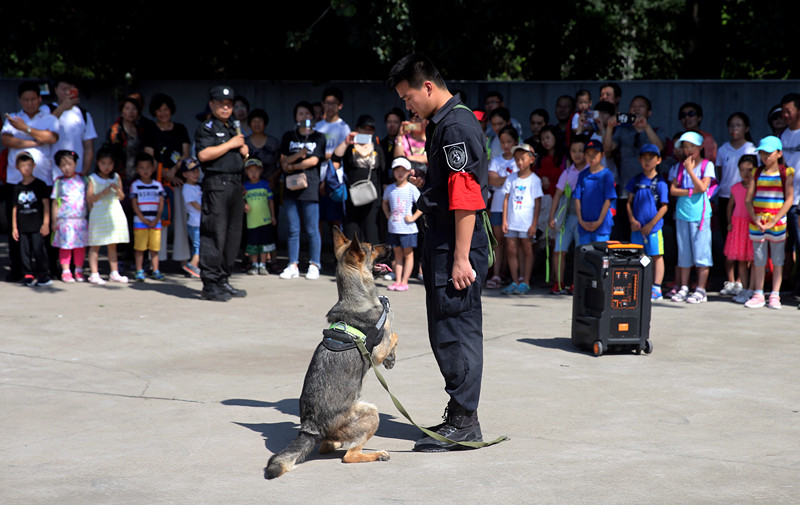Police develop command device for canine unit
By Zhang Yi | China Daily | Updated: 2018-08-20 09:07

Police officer Xu Yunlong and his colleagues at a police dog training center in Beijing have been researching the use of high-frequency sounds to give commands to dogs in special situations.
"Dogs can hear high-frequency sounds that humans can't. By using such sounds, police can give the animals orders in situations in which they don't want to be heard, or from long distances," said Xu, a trainer at a police dog training base in suburban Beijing that is home to about 270 dogs.
He and other officers have developed a two-part device that consists of a remote control transmitter, held by a police officer, and an ultrasonic emitter attached to a dog's harness.
When the officer pushes one of 12 buttons on the transmitter, a particular high-frequency sound will be emitted by the device on the harness, signifying a specific command.
Xu said the system, which has been in development since August last year, can produce a wider range of signals than a traditional dog whistle, while the frequencies are also more precise.
"On hearing different sounds, the dogs will execute the instruction," he said. "The dogs have learned five instructions, including sit, move and attack."
Xu has been training police dogs to identify explosives, drugs and gasoline for seven years to help protect Beijing's subway stations. He said the dogs' fondness for toy balls played a role in training them to respond to ultrasonic commands.
He said trainers made use of dogs' innate sensitivity to smell to train them to detect prohibited items, using a toy ball as a reward to generate a conditioned response.
It took the dogs about 30 practices to develop the required habit, and the training continued every month to reinforce it, Xu said.
"Just as in the smell training, we encourage the dogs to obey a specific command when they hear a certain high-frequency sound, and then give them a ball to play with as a reward," he said. "In time, the dogs will respond appropriately whenever they hear the sound."
Xu said the ultrasonic device has a range of 100 meters, but the distance could be extended as the technology improves.
"We're also planning to develop a shockproof camera for dogs to wear so we can see the surroundings from the dog's perspective," he said.
"Along with the ultrasonic device, police will be able to give instructions to dogs from a long distance in places they cannot see."
He said the ultrasonic device has not been put into use in everyday policing yet, as trainers are still figuring out the best way to make dogs respond appropriately to different sounds.
Liu Yuyin contributed to this story.
























